

Over 70% of FMCG categories are predetermined before shoppers enter the store. Most of the items bought in supermarkets are already determined by routine before the shopper walks down the aisle. Yet there's a massive opportunity for 28% of the product purchases where impulse purchasing still reigns. The question is, what categories do shoppers engage with instore?
The Nielsen Category Shopping Fundamentals survey shows more people go to the supermarket to buy milk (57%) than any other item. Now you know why Coles launched its massive $1 a litre own brand milk campaign to grab share from Woolworths. Yet milk is one of the least considered decisions shoppers make at point of sale. Over 70% of shoppers aren't engaged by the category in the store.
It's a similar story for pet food and toilet paper. If you're a marketer of these low engagement instore categories you will get a better marketing ROI from a brand advertising campaign or an incentive before people go shopping.
Low engagement products don't benefit well from instore merchandising
Prospects who are less interested in your product instore are best marketed to out of store. From flyers to shopper dockets, catalogues to mobile promotions driving people to the store you will have better impact than attempting to get their attention while on autopilot in your category aisle. Packaging and instore merchadising is also less likely to switch customers between brands than other categories where people are actually paying attention.
However over half the shoppers surveyed are engaged by the process of shopping, just not with every category. So it follows knowing which category a product falls into helps marketers decide where to best invest in marketing.
The high engagement FMCG categories are frozen snacks and desserts
Shoppers are more engaged by more indulgent purchases like frozen desserts (64%) and infrequent purchases like toothbrushes (64%). Here is a snapshot of what shoppers are looking at with their brains switched off versus on:
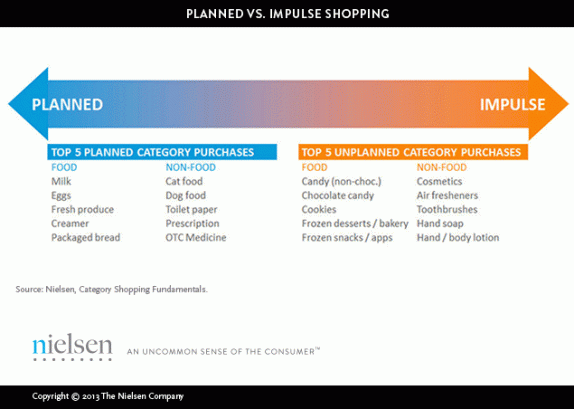
Categories with high engagement are better served by product innovation, instore merchandising and promotions and eye catching packaging.
Our marketing for Pacific West frozen seafood and snacks was centred on creating news and a fresh take on seafood. More adventurous choices has proven to be a more appealing strategy to the predictable product and positioning of Birdseye and I&J. Seven years of year on year growth for Pacific West shows what a difference it makes when you leverage an engaged instore audience.
Read MorePugs & Kisses & Christmas Wishes

(Click to Play)
A sincere thanks to our friends and colleagues for sharing our journey in 2013, UNO’s 13th year growing challenger brands.
We wish you and your family (and all creatures great and small) all the best for 2014.
Once again rather than send cards, we are supporting four koalas through the caring efforts of The Koala Foundation.
Best wishes from the UNO family.
Read MoreAIDS ads that changed our lives: If it's not on, it's not on

Australia faced a big problem in the 80s: AIDS was killing us
In the late 1980s AIDS was spreading unchecked in Australia amongst sexually active adults with multiple partners, homosexual males and intravenous drug users. Most people had no idea how you could catch it and there was no known cure. The only certainty was if you found you had AIDS, it was a death sentence.

The first government advertising campaign to raise awareness of the issue had failed to address the spread of AIDS. While “The Grim Reaper” ads certainly gained attention, the messages had not connected with those at risk and had not changed unsafe sex practices.
Indeed the Grim Reaper had simply scared the general public, especially kids and older people, without offering a compelling safe sex message. In charge of the government's AIDS awareness task force, Ita Buttrose had acknowledged the mistake the Grim Reaper fear campaign had been. The agency responsible that she'd appointed was fired and we were asked to implement our campaign they'd originally passed over for the Reaper.
The creative solution: "next time you go to bed with someone, ask yourself..."
"...how many people are you really going to bed with?"
You can't scare people into doing what's good for them. In fact, it's human nature to reject being told what to do. The art of persuasion often begins with starting a conversation that acknowledges the audience's point of view. And builds from there with an undeniable logic.
This commercial for the first time educated the community it wasn't "other people" who got AIDS, it was potentially anyone who went to bed with someone for unprotected sex.
Shot by Ray Lawrence (who went on to direct Bliss, Lantana and Jindabyne) my AIDS "beds" ad was made before the era of computer generated images. We put 800 real people into 400 real beds in the largest space we could hire in Sydney, the old tobacco bond store in Moore Park. The campaign worked in achieving the brief of raising awareness and driving behaviour change amongst those most at risk. The managers at Ansell would report an uplift in condom sales with every burst of our ads.
It's not often in this business you get the opportunity to really make a difference for society. It's usually baked beans and banking products.
Over three years as lead creative communicator I helped develop a series of undeniable messages that were created for specific audiences. From mass market messages on TV and radio, brochures for distribution in health clinics, English as a second language ads in ethnic press to bus sides and gay street press, posters on beats and stickers on public toilet doors.
The “Beds” ad which asked “next time you go to bed with someone, ask yourself how many are you really having sex with?” gave a graphic explanation of the chain of infection. The “Tell him if it’s not on, it’s not on” ads empowered people to demand their partners wear a condom. On the back of dunny doors in pubs across the country you couldn't ignore the big sticker of a condom clad erect penis with the words: "cover yourself against AIDS"
The outcome: Australia led the world in stopping the spread of AIDS
The integrated advertising campaign successfully raised awareness of AIDS amongst those segments of society most at risk of infection. The messages also reassured those not at risk and transformed the public view from one of “victims of AIDS” to an empowering safe sex message.
The creative campaign was instrumental in educating the public and changing sexual behaviour to succesfully reduce the transmission of the AIDS virus. The leader of Australia's health sector tasked with stemming the epidemic acknowledged the strength of the campaign:
“The message in this war against AIDS is a tough one – we know it will be controversial but we are certain it is the right approach, and it is backed by the World Health Organisation.”
Professor Ron Penny, National AIDS Council, 1988
This AIDS campaign is still recognised around the world as the most effective of it’s kind
Read MoreObstacles to innovation: A jeweller’s tale
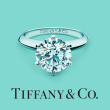

Have you read the retail sector is finally looking up? Unfortunately not for everyone.
A friend of mine is one of Australia’s leading luxury jewellers. This year his turnover is down 20% and the word in the trade is over two dozen high-end jewellers around Sydney are on the brink of closure. That’s a lot in such a niche category. What has served them well for decades has seemingly evaporated overnight.
Where have the sales gone? A few years ago no-one had heard of Pandora as a brand of jewellery. Australia is now Pandora's fouth biggest market in the world. Or have you heard of The Iconic as a place to shop for fashion? Last week The Iconic turned over $1,000,000 of online sales in one day.
The simple answer for retail is to go online, right?
My jeweller’s quandary is he opened an online store with a similar offer to his shop and failed to gain any incremental growth.
Global changes demand an innovative response
It’s not just small high-end jewellers suffering from change. The global super premium brands are suffering the curse of ubiquity, Louis Vuitton sales are plummeting despite the increase in purchases of luxury goods by the emerging Chinese millionaire class.
We are increasingly seeing fashion conscious style setters seeking designs from unknown startups, boutique designers that they can tell friends they’ve discovered. Being in the know has more credibility with peers than wearing what any person with a Platinum card can buy in any Gucci store, from Guangzou to Fifth Avenue, Sydney to Roppongi.
Big brands have difficulty innovating as they have an aversion to cannibalising their existing business. It becomes harder the bigger and more established you are, which fortunately gives Australian challenger brands an advantage. The barriers to innovation have been identified in a Australia wide research by the Australian Institute of Management:
What’s stopping Australian businesses innovating

My friend said he had come across an offshore maker of silver jewellery, gold plated with semi-precious stones that look amazing but only retail for $300 to $500. His fear is if he stocked them no-one would continue to pay $3,000 to $5,000 for his similar looking existing product.
My suggestion to my jeweller friend is to take advantage of his ability to be more nimble than a Tiffany. He isn't facing the number one barrier to innovation, a lengthy development time and there is a way he can try something new with minimal risk. If he quickly sets up a small online store under a different brand, he then has no reputation to lose and can test the appetite for this new product.
The ability to test the mix of product and price is easily done with an online store. I’ve written in the past about how we can learn from fashion retailers that are innovating for pricing advantage.
The study shows the upside to trying new ways by becoming an innovator in your category is huge.
Innovation leaders Vs laggers: business performance ratings.
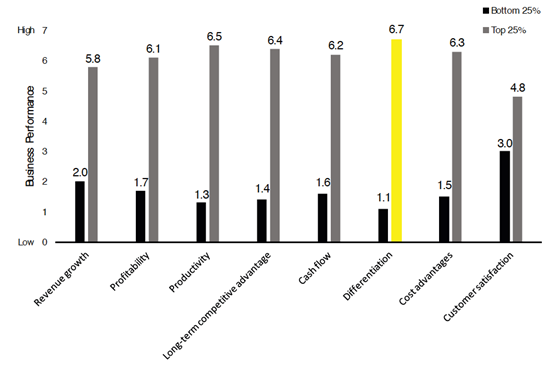
Innovation leaders are two to three times more successful than innovation laggers in terms of growth, profitability, productivity and cash flow. Risk obviously has greater rewards than business as usual. One UNO case study proves the point, Butterfly Silver was the first Australian Jeweller to apply a fashion forward procurement model to become a successful challenger brand.
Source: University of Melbourne and the Australian Institute of Management. 2013
Read MoreSales conversion rates: the facts

Sales call stats – how does your team rate?
48% of sales people NEVER follow up with a prospect.
25% of sales people make a second contact and stop.
12% of sales people only make three contacts and stop.
Only 10% of sales people make more than three contacts with a prospect
So if your sales people are typical of all sales forces, what are the consequences of only 10% of them calling on a prospect more than three times?
Conversion rates increase with sales call rates
2% of sales are made on the first contact.
3% of sales are made on the second contact.
5% of sales are made on the third contact.
10% of sales are made on the fourth contact.
80% of sales are made on the fifth to twelfth contact
Sure, it costs more for your people to call more than 3 times, but consider your return on investment when you factor in the typical conversion rates. Three calls and under only converts 10% of sales!
If your sales people are not following up, the stats indicate there is little to be gained by simply adding new names for them to visit. It also shows the value of building brand awareness before the sales person calls.
Source: Richter10. Thanks to Rick Allen for sharing
Why are most ads so bad nowadays?

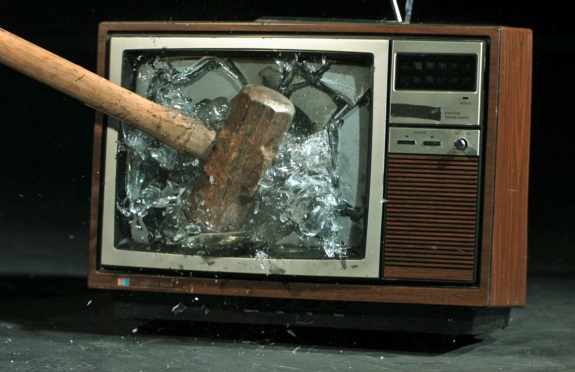
Bartle Bogle Hegarty was the London ad agency every ambitious Australian creative wanted to work at in the 80s. They made a series of great ads for Levis including “laundrette”, came up with "Vorsprung durch Technik" for Audi, "The Lynx Effect" for Unilever and "Keep Walking" for Johnnie Walker whiskey.
BBH creative founder “Sir” John Heggarty will speak at a global advertiser conference in Sydney in March. He has already given an idea of what advice he has to for Australia's advertisers.
What is the state of advertising creativity today?
“It’s one of the best times ever to be in advertising but why is it the work is poor,” he told AdNews from his organic and biodynamic vineyard in France. “I don’t know of any other industry in the world that would say the way to succeed is to make a worse product. And we seem to be in that situation in advertising."
CEOs in Australia say they want creativity
More than anything else, a recent Australia wide survey of CEOs shows they want their marketing agencies to be creative. Yet one look around shows how poor ads are today.
The CEO of a financial services group asked me recently what killed the Australian ad industry? "The Internet?" he asked. "Globalisation" I answered.
The fact is, in Australia the biggest brands mostly run ads from somewhere else. They don’t care if their ads don’t work very well here, in the global scheme of things one year’s revenue in Australia can be surpassed in one long-weekend in Florida.
So I wasn’t surprised to see Sir John identify the cause of mediocre advertising. “You can talk about technology being the reason but for me the biggest issue is the globalisation of our industry. We don’t seem to be able to create work globally that has impact. I think marketers today are losing contact with people despite the fact they have many more ways of communicating with them.”
Meanwhile home grown ad standards are going down, down
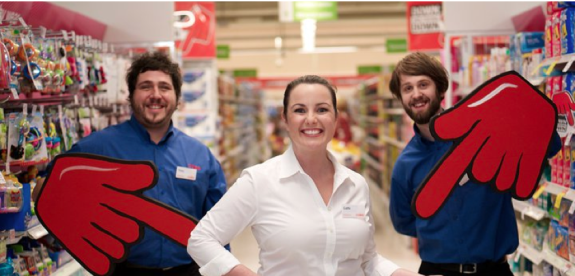
We are increasingly bomdarded with ads produced in-house by Australia's retailers, further driving standards down, down. Over 30 years creating ads has taught me great creativity sells. Especially when developed by local writers and art directors who are in touch with the essence of what makes Australians tick. I believe clients are best served by ads that tap into human insights, no matter how small. When told with humour or compelling gravitas a human truth will cut through where so called big ideas with big budgets and big name stars fail to connect with real customers.
Are you more inclined to buy from someone you like? I know I respond better to brands that have an endearing conversation with me, rather than a list of claims shouted at me, even when put to a jingle. The answer to appealing to customers doesn't lie in more data.
Sir John also warned about the dangers of data and analytics –
“Clients are desperate for salesmanship to be a science. They would love it to be. They would love to be able to say this equals that and this will be the return on investment so let’s do it. But they can’t. In the end it’s a judgment call you still have to make.”
Lets all hope more advertisers re-embrace the power of creative story telling, it makes better viewing.
Read MoreCustomer loyalty in Australia comes at a different price to O.S.

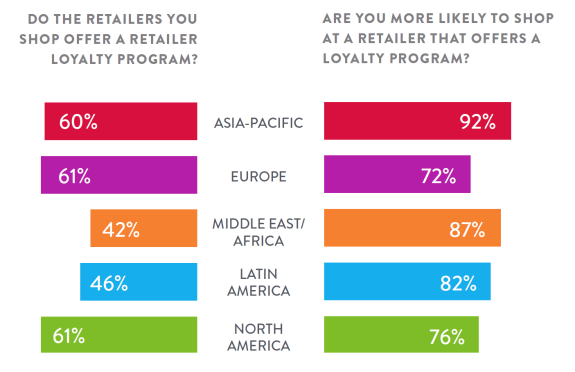
Our region ranks 1st in responsiveness to loyalty programs
We now have proof customers in the Asia-Pacific are the most willing in the world to reward businesses with loyalty. Whether you are in a service or product category, the good news for Australian business managers is your customers' loyalty doesn’t have to come at the price of discounting.
Don’t think global when marketing local
You can out-maneuver big brands that continue applying globally what works in their home market. Consider implementing strategies that Australian customers will reward with loyalty.
The US is introspective, remember it's the country that has a World Series with only US teams. Most US companies don’t have our local market's needs on their radar. Meanwhile, Europe’s big brands are struggling at home with a deflationary market. These parochial management mindsets offer Australian brands an unique opportunity. It's the perfect time to think and act local where big global players have a tendency to universally apply one strategy.
A global survey now shows us just how different Australian consumers are compared to the home town customers of global brands.
The Neilsen Global Report of Loyalty shows our customers are different
Unlike Europe and the US where 82% customers want discounts and free products as a reward, in our region we are less motivated (70%) than anywhere else by something for nothing. Here customers lead the world in valuing good customer service (53%) and exclusive deals (41%). The Customer Loyalty Report shows your customers want you to give them quality and service more than just price:
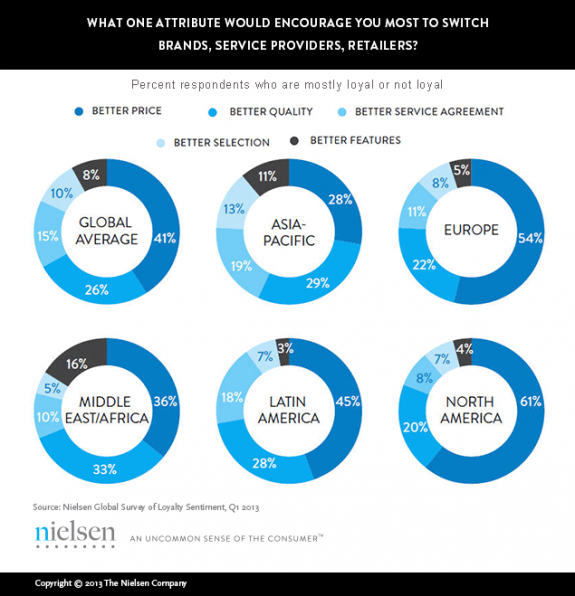
Loyalty programs can improve profits
UNO applied the disciplines of building a loyalty program around quality and service for Vivien's Jewellers. We replaced monthly cardboard in-window price promotions with quality themed creative store merchandising. We introduced a VIP loyalty program that emphasised exclusive product offers. Sales, discounting and price promotions were no longer frequent, being replaced with special occassion sales through invitation-only Wednesday night store openings. While Angus & Coote and Michael Hill were seen to be always on sale, we built a reputation for accessable aspiration.

Over 5 years we transformed Vivien's sales base from only 25% repeat sales to 75%. This also helped Vivien's double the number of profitable stores and ultimately sell the business at a category premium.
I continue to encourage our challenger brand clients to compete with the global competition by developing marketing strategies focused on what customers really value. The big guys often lack the ability to get close to the customer, let alone respond. You may have noticed over the last year a number of visiting global FMCG heads lamenting how hard it is for them to make money in the Australian market. Coles and Woolies forcing them to cut margins isn't helping.
Do you cut for share or innovate to grow?
Increasingly businesses nimble enough to canibalise their existing sales by trialing new products or services will gain market share in the long term. And because they aren’t discounting, those sales can be more profitable.
Spend your time looking at ways to make your customers feel understood and then invest in a creative communucation of your differentiated proposition. Let the global brands discount their way to local irrelevance.
Read MoreFrom the people who gave us wooden pillows – brand differentiation

Do you think it’s hard to differentiate in your category?
 A trip to Japan gave me a fresh perspective on how to make any brand stand apart from the competition.
A trip to Japan gave me a fresh perspective on how to make any brand stand apart from the competition.
Last month I bought a new mattress from David Jones Sydney city store. Each brand had the same proposition: sleep soundly and wake refreshed. Choose between hard or soft, affordable or expensive.
Talk about a lack of fresh ideas, the promise of a good nights sleep hasn’t changed since I worked on the Simons mattress account 30 years ago, or the idea of looking after your back when I marketed Sealy “Posturepedic” 20 years ago.
The Japanese have a strange way of looking at brand propositions
At least on first view this first world nation has some peculiar ideas about brand messaging. The English language isn’t used by 999 out of 1,000. And Japan has a proud history of maintaining thousand year old traditions. So this different background means common products are often promoted in totally different ways to our western approach.
A couple of weeks ago I checked out the merchandising of mattresses in a central Tokyo department store. Here are some pictures I took when the salesman wasn’t looking – mattresses marketed the way Nike sells shoes.
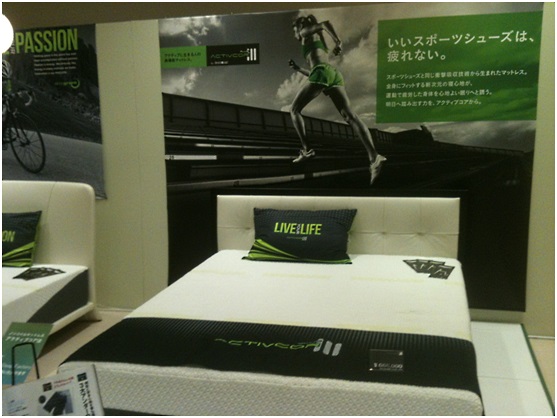

Nothing soft and fluffy about this positioning – “Activor, the next generation in sleep technology.” Hi-tech performance for the modern Japanese consumer.
Feeling inspired? Whatever your category, you can find inspiration from taking a completely different perspective.
P.S. Aussie mattress brand repositions for export market
Local mattress maker A H Beard has just launched in China. Unencumbered by any legacy in this new market, how are they differentiating? Their first mattress for Chinese consumers retails for over $20,000. That should set them apart.
Read MoreVale Scott Kennedy – one of NZ's finest artists
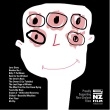
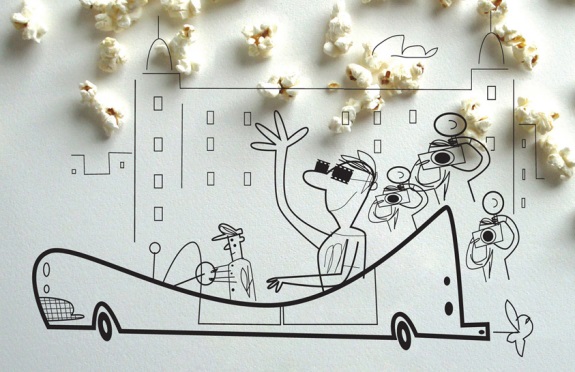
Our professional careers are sometimes touched by the most inspiring personal relationships. I was blessed with the early entry into my life as an Art Director by an artistic genius from across the ditch, Scott Kennedy. It was the early 80s and any Kiwi artist of promise had washed up in Sydney seeking a broader canvas.
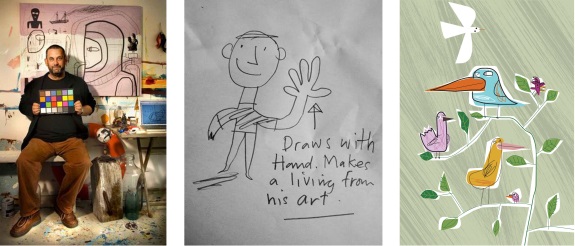
Scott bid us goodbye last week after a painful but defiantly good-humoured fight with cancer. At the end his hands wouldn’t work, but Scott’s creativity was always alive in his one of a kind headspace.

As you can see Scott’s view of life was re-expressed through the lens of 60s cartoon characters and tin toy robots and Dr Strangelove. His ex-US Army dad had relocated the entire family from California to New Zealand in the belief it was the safest place to be when they dropped The Bomb.
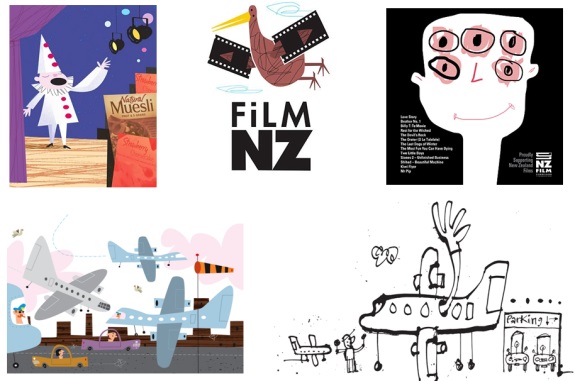
I loved Scott for his quirky humour, big heartedness and child like enthusiasm for new creative possibilities. Have a Captain Cook at Scott’s book covers for the popular How to… series, no surprises which is my favourite.
I write this while wearing Scott's "Joy kills sorrow" T-shirt, which is a fitting memorial to his precious time with us.
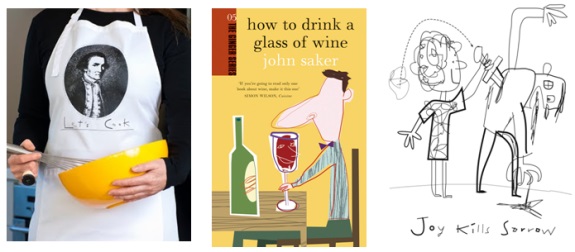
What CEOs want from an agency


The top 3 things CEOs and CMOs want from their agency according to a survey by the Communications Council are:
1. Innovation and creativity
2. Leadership
3. Integrity
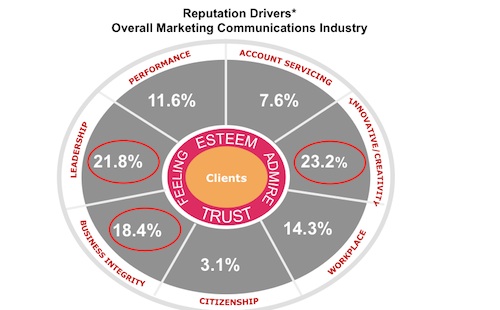
Funnily enough, the leaders of agencies put Leadership last.
Which could explain why three quarters of CEOs don't value marketers at the board level.
I wonder if this is a reflection of the transaction based relationships most agencies seem to be stuck in today. Whatever happened to “fearless advice”. It's what most left brain business managers want from right brain agency creative thinkers. Creative thought leadership is where agencies add value, not servile account management.
Perhaps it’s a consequence of a co-dependent relationship between ignorant brand managers and subservient suppliers. Meanwhile the smart business leaders appreciate the real value to be added is at the board level, with lateral and entrepreneurial advisors from outside their organisation helping them challenge traditional business models.
Read MoreWhy the CEO has to be the chief blogger

Successful social media strategy starts at the top of every business
It's misguided to think social media can simply be delegated to the youngest in the business, or outsourced to a digital agency. Social media is simply another relationship management channel. So it makes sense the strategy of what will be discussed in social media and what won't lies with the CEO. Social media is the one place the CEO's message can get through direct to the individual, without being filtered.
So if you're the CEO, consider this medium as your direct way to have a personal conversation where you can champion what you believe in. Before you begin, reconsider what you want your business to be known for. Ask yourself what is at the heart of why people should buy from your business, rather than your competitors?
Recent research by PR firm Weber Shandwick shows social media has positive impacts on business. (Click to enlarge.)
This simple checklist will help frame the social media agenda for your business
- What is the purpose of the business, what will success look like?
- What is the business strategy?
- What does the business believe in?
- How does it add value?
- What are its beliefs and ethics, its reason for being, its mojo?
- What is the business story? The way you express your differentiation, the reason for customers to choose you.
- Who does the business want to help? Who do you want to leave for your competitors to lose time or money trying to please?
- Who does the business want to influence? The gatekeepers to your prospects, or perhaps the well connected people who might bad mouth you through ignorance?
- Who does the business want to work with? Do you have affinity partners or associations you can share your blogs with?
- What kind of people does the business want to attract? It now matters what you look like in the blogoshere because it's the first place most potential employees will check you out.
Reputation risk has been elevated by social media
As equally important as having a social media presence is what you say. Being active across social media brings new risks. What is published online stays online, potentially forever. No wonder reputation risk is now the number one concern of CEOs globally according to the latest report from Deloitte.
Perhaps if more CEOs took control they would minimise the risk of staff who know less being the main originators of social media conversations. The CEO is best placed to set the agenda, staff can then follow through.
According to research by Weber Shandwick, more than six in 10 CEOs are already posting content on company websites. Yet only 18 per cent of the CEOs surveyed participated on social networks. The chart above gives an overview of the survey findings. Interstingly, 80% of staff want to see their CEOs on social media, largely because it's where they want to keep up to date.
I feel most CEOs I talk to are missing this powerful opportunity to spread the truth about their business vision. Social media is where these truths are shared and discussed, it's one place the leader can champion their cause with passion.
Read MoreWhat makes mid-sized businesses more profitable than big?
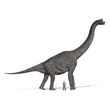
So what is a mid-sized business?
GE Capital has been defining the mid market in Australia as businesses that have annual revenues of between A$10 million and A$250 million. Average firm turnover is about A$41 million. Despite comprising just 1.4% of companies by number, mid-market firms provide one in four full-time jobs and contribute A$425 billion annually to the economy.
The federal Department of Innovation, Industry, Science and Research, which has a broader definition of medium-sized businesses as those with between 20 and 199 employees, puts the economic contribution of the mid-market considerably higher.
The mid-market campaign we successfully managed over four years for IBM targeted businesses from 99 and right up to 999, the large corporate and government sectors that IBM traditionally owned really kick in around 1,000 staff.
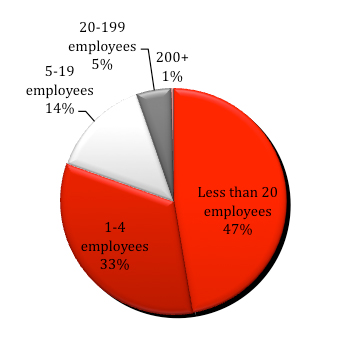
Australian Business
Most mangers still hold the belief big means better. We hold a belief businesses can only succeed today by being nimble. The reason for this is the profound change the Internet has brought to our lives. The world even quite recently was quite slow to change, and most businesses were relatively simple. Today we all compete in a world of rapid paced change and increasing complexity. So the old big business model of slowly and effectively finding savings from gradual improvements to products and services and small efficiency gains in management and procurement are no longer enough to stay competitive. Let alone stay in business.
The evidence for the decline in profitability of big business is seen in this chart. It shows one third of market leaders in their category in 1950 were also the most profitable businesses in their category, whereas today being big almost guarantees you’ll be struggling to make a buck.
Market leaders that are also category profit leaders:
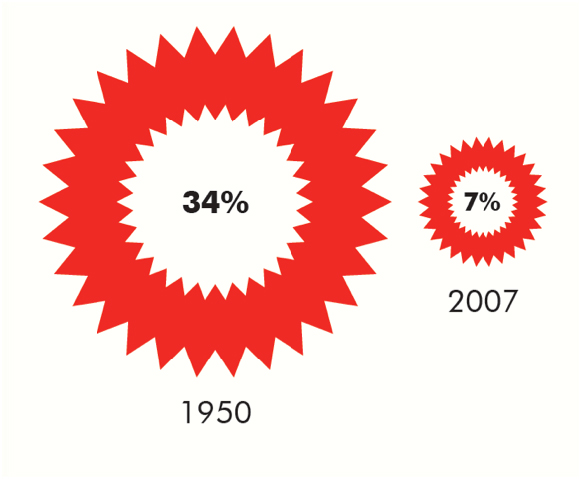
What makes big business vulnerable to challenger brands
George Shinkle is a Lecturer in the School of Strategy and Entrepreneurship at the Australian School of Business. He has been studying why big business is failing.
“Organisations grow large by becoming more efficient, so when you’re really focusing on efficiency you typically become less and less flexible. The rules and processes and procedures become more and more about keeping you efficient, constraining your ability to be flexible,” he says.
“If you talk to the CEO of a very large firm, they don’t feel as if they’ve got direct control of what the organisation’s really doing. They give guidance and they set policy but the organisation has some variance on how well they follow those things,” says Shinkle.
The learning you can take advantage of is that managers in large companies try to hide from change. Which is why, if you’re running a mid-market business, you will create your own advantage by actively seeking out things to change to differentiate from the competition.
Not too big, not too small, mid-sized business is just right
Big business is still obsessed with conformity, groupthink and doing things the way they have always been done around here. Small businesses may be the birthplace of great ideas, but they usually don’t have the scale or resources to commercialise those insights.
The mid-sized business is perfectly placed in the middle, where the distance between innovative thinkers and management that can actually make decisions is short. Unlike small business, resources aren’t so slim ideas can’t be trialled without damaging the existing business of running the business.
At a CEO Institute meeting Susan Lenehan told me the biggest frustration of the CEOs of Australian arms of global businesses she mentors is their total lack of autonomy. They are prescribed what to do by head office irrespective of local circumstances. In her words, it’s the pinnacle of the “bully culture” of big business management.
Challenger brands will prosper by taking risks
This is the great opportunity mid-sized Australian businesses are exploiting, they can leverage their ability to try changes, while the big guys are stuck in the inertia of business as usual, with its five year plans, annual targets and quarterly reporting. By challenging traditional big brands, Australians can be globally competitive in a world that is changing daily.
The real successes come from maximising returns by minimising the risks of change – we developed the challenger brand formula for growth for this very reason.
Why you need brand awareness before sales
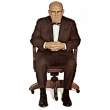
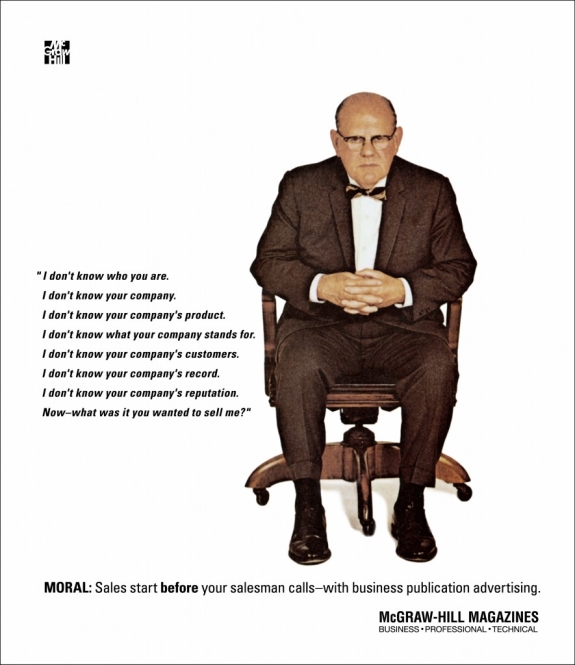
This famous ad for advertising with McGraw Hill appeared in 1958
Business owners sometimes need reminding of the timeless challenge, why would a prospect buy from you rather than one of your competitors?
For 50 years the simple answer was to spend more on advertising than the rest of your category. As marketers now realise, simple strategies in this Internet enabled world now require more complex solutions.
Challenger brands can succeed today without big ad budgets
The good news is smaller businesses can now be successful challenger brands with smaller budgets than the big brands. The staring point is to differentiate. with a singleminded story that prospects will value. you can then apply a test and learn approach to marketing across multiple mediums. Smarter strategies applied with insight will now succeed while big spending inflexible brands continue to struggle.
Read More73% of marketers say more has changed in 2 years than the past 50
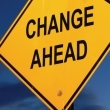
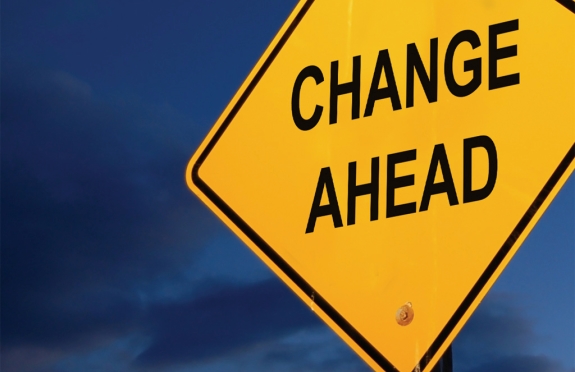
Who are you going to call to advise your business on how to grasp the rapidly expanding number of marketing communications options? Usually you’d call in an expert. However, the pace of change right across the business world and the complexity of competing solutions is so great how can any individual be an expert? And big businesses may have lots of individuals, but we all know they rarely work as a team let alone communicate well with clients.
Marketing professionals are confused
A survey* by Adobe of 1000 marketers in the US shows the crisis in confidence of the marketing services.
“Marketers are facing a dilemma: they aren’t sure what’s working, they’re feeling under-equipped to meet the challenges of digital, and they’re having a tough time keeping up with the pace of change in the industry. What’s worse, no one hands you a playbook on how to make it all work,” says Ann Lewnes, Chief Marketing Officer, Adobe.
Digital marketing is full of novices
Adobe’s survey found less than half (48%) of marketers who consider themselves primarily digital specialists feel highly proficient in digital marketing. Most digital marketers haven’t had any formal training in digital marketing. No surprise really, it’s so new and evolving very few places can teach it.
The problem for business owners is how to leverage what’s new when so few people, if indeed any, know what will work. The people whose job it is to know, professional marketers, revealed in the survey the same old issues are today’s top challenges. 82% cited reaching their customers as the biggest challenge, then the uncertainty of knowing if their campaigns are working (79%), and measuring campaign effectiveness (77%) and marketing ROI (75%).
The answer for marketing your business?
Today every part of the business has to take risks
Whether it’s your accounting systems, distribution, IT or marketing, everything now is facing change. It’s hard enough to know the right question to ask anymore, let alone have the right answer. The safest option today is counterintuitive – it’s to realise you can’t predict winners anymore.
So the safe approach with marketing is no longer to set and forget. Rather than taking a long time and spending a lot of money attempting to develop the one perfect solution, try a lot ideas and mediums. And try them quickly and often.
Test. Learn. Adjust. Test again.
Learn to feel comfortable with failures. Set out to make the risks small so the stakes aren’t too high. Then go for it with a test and learn approach to marketing. The more often you fail the quicker you’ll find yourself challenging the competition and being successful.
* Source: Adobe and Edelman Berland, online survey among a total of 1000 US marketers. Marketing Staff (n=499), Marketing Decision Makers (n=436), Digital Marketers (n=263), and Marketing Generalists (n=754). September 2013
Read MoreAre fashion retailers training customers to buy on sale?
I've written in the past how Zara led the world by applying just-in-time manufacturing and data analytics to bring us fashion forward product design. This has given them an advantage over traditional retailers by circumventing the traditional seasonal approach to fashion.
Instead of waiting for the leading designers to reveal on the Paris catwalks what we'll be wearing next year, Zara's innovation was to take the Dell Computer model. Zara replenishes stock in their stores every week, see what sells, then make more of what is popular. Rather than sitting on large quantities of stock hoping people will like what style you've backed, Zara take a test and learn approach. They never back one colour or style for a full season, Zara simply adjusts what they manufacture on the fly to what the consumer wants this week.
Fashion challenger brands risk destroying the advantage they have created
Retailers are losing the power to maintain margins by encouraging a buy on sale mentality. According to Robin Givhan, the only clothes critic to win a Pulitzer Prize, with the constant turnover and turnout of items due to the ever-quickening fashion cycle, there’s no need to buy anything at full price anymore.
While bloggers and fashion critics have used social media to drive awareness and demand of the weekly fashion cycle, retailers she says are to blame for the loss of their pricing power.
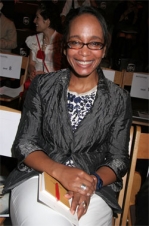
"Retailers talk a lot about how the availability of show images pique the interest of consumers before the clothes are available. But I blame retailers for creating a system in which they want spring clothes in November and more shipments every five second[s] and then putting things on sale when they've only been on the racks for one second," said Givhan.
Consumers usually don't know how to establish the value of something, it's actually within the power of the seller to frame the price that they will believe is fair.
Innovate for pricing advantage
If you have innovated your way to a price advantage, don't throw away your smartly won margin. Instead, decide how you can frame the price as fair value, for instance in terms of more for the same, or faster for the same, or better for the same. Offering something for less is an approach fashion retailers are finding comes at the cost of not just profit, but long term survival.
Don't drive your category to the bottom the way Persian Rug stores have, where in every corner of the world the SALE sign on the window now means OPEN. Here's one I snapped in Hong Kong...
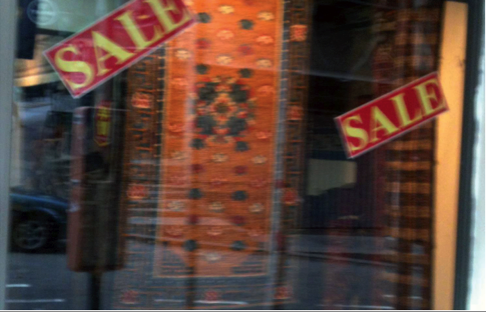
Do you have a clear point of difference to drive growth?


Staying in business has never been harder. 10,632 companies collapsed in the 12 months to March 1 2013 - ASIC also reports the number of firms being placed in administration is more than 12 per cent higher than during the GFC. Over the last few months an average of 44 small businesses were closing every day according to ABS data.
A change of government won’t change the fact the pace of change is still accelerating, the choices for customers continue growing and the decisions we all face in life are more complex than ever.
Where will your business growth come from?
These are your options:
- From existing clients
- By getting new clients
- Expanding to new locations, (interstate, overseas)
- Developing new services
- Making acquisitions
90% of businesses focus on number 1, selling more to current customers or charging them more. Yet the upside is limited.
Of the small number that go down the acquisition path most are disappointed. An AGSM survey of mergers and acquisitions showed after 3 years just 10% exceeded expectations of synergy and only 10% - 15% met expectations. The rest had failed or were in a death spiral.
Expansion and new product or service development often require a large commitment of resources and takes attention away from the existing business.
Which leaves new business as the key driver of growth. Marketing is the one proven method that can drive scalable new business growth. A successful new business program begins by confirming you have a differentiated offer relevant to today’s customer. Every prospective customer has more than one choice. What does your business have that makes it so special they have to choose you?
Customer alignment, simplification and innovation
Here’s a simple technique that GE Capital employs to keep their business differentiated in this time of rapid change. 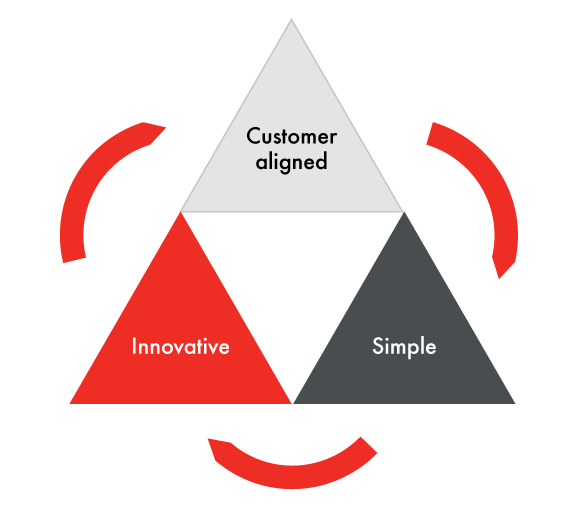
Customer aligned
- Employees know which customer segments we serve and what their top 3 needs are
- Our organisation rallies around these needs (customer facing & support departments)
- We continuously track customer metrics at a transaction, product and business level
- We respond to customer feedback fast
Simple
- We do less, better
- Our customer processes are intuitive
- Our internal processes are as easy as our customer processes
- We routinely identify and eliminate the bottom 30% flow value processes, reporting and meetings
Innovative
- We encourage, empower and reward staff who challenge the status quo
- We launch new ideas fast (< 45 days average)
- We have a full pipeline of ideas linked to incremental volume
- We invest a significant amount annually on innovation
Differentiation for new business growth
Don’t hold your breath waiting for the government to simplify regulation, align their policies with your needs or innovate the country’s way to prosperity. Look at your current structure, reconsider what the business currently offers and determine a positioning that will differentiate you from your competition. Today.
This is just one of the tools UNO uses to ensure when our challenger brand clients invest in marketing, the returns will be worth the effort.
Read More
There are few categories more sophisticated at marketing than fast food. For 50 years McDonalds has been fine-tuning their brand marketing driven machine in Australia. Other brands may talk share of voice or share of wallet, McDonalds is famous for wanting the largest share of stomach in the country.
The business is a great example of how to upsell, cross sell and find new reasons for customers to visit. From breakfast muffins through burgers and happy meals to soft serves and late night treats, washed down by McCafe coffees in between. From Pasta Zu to chicken nuggets to who knows what else a machine can transform animal castoffs into.
Want fries with that?
All of these tactics are an excuse to get more people to buy fries more often, it's where the big profits are made. Makes you wonder how anyone can compete? If you don't work for an omnipotent global business there is evidence of hope. Roy Morgan reasearch released in August 2013 shows just how well new competitors can do by choosing to take a challenger brand positioning.
A case study in how positioning can outsmart the big brands
Hungry Jacks came much later, and has never had the footprint or the ad budget to compete head on. What has worked long term for Jack Cowin's fast food challenger up against a global heavyweight, is a differentiated positioning that gives it a clearly defined space to compete in. "The burgers are better at Hungry Jacks."
From day one they lived up to that positioning statement, better burgers; either with biigger burger patties, actual lettuce instead of a miserable pickled cucumber, to the first Angus beef burger, then bacon and now organic beef. Single mindedly niche focused, and better for it in the minds of customers, who consistently rank Hungry Jacks above Maccas.
Long-term customer satisfaction in fast food comes from smart positioning. Chart: Roy Morgan, August 2013
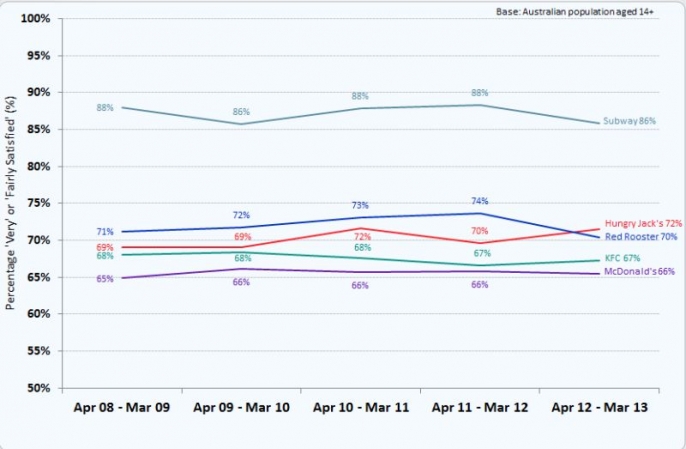
Challenger brands create new terms to compete on
Subway shows the rewards of zigging when the competition zags. While fast food leaders spent their product and promotion strategies on short term price promotion or new themes, from changing with the seasons, think summer pineapple burgers to following fashions, think cajun sauce. Meanwhile Subway went where no fast food had ever successfully gone before: the good for you. positioning.
The chart shows the relative strength of Burger King's "do less of the same, better" approach, and Subway's "do something completely different" model. Both are positively recognised by the consumer and continue to command a price premium to the slower to innovate fast food competition.
What size is a typical marketing budget?

How much is the right amount to invest in marketing?
Depends who you ask. The CMO Council asked hundreds of chief marketing officers around the world across categories how big their budgets are. While this was post GFC, it gives us a useful benchmark when planning ahead.
The starting point for setting a budget uses a top down approach based on your revenue. The chart we've made below shows the percentage of revenue invested in marketing by business to business firms.
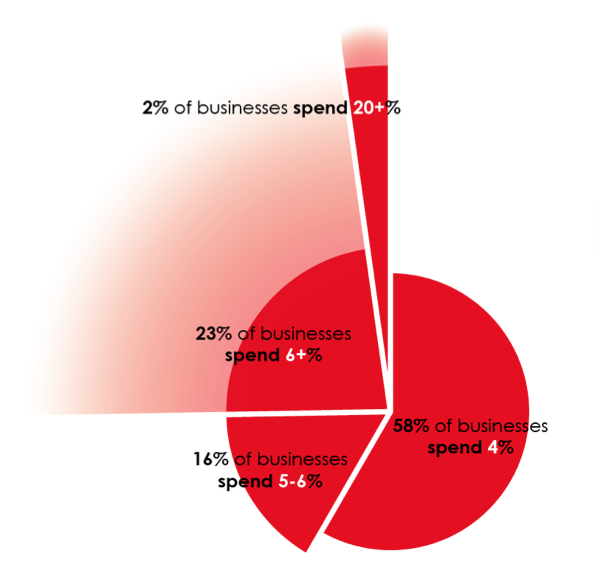
Percentage of revenue invested in B2B marketing
2010 CMO Council Survey
Interestingly, the consensus view amongst those surveyed was that a new brand launch required a minimum investment of 20% of revenue. As we can see from the chart, either there aren't many new brands launched in any year, or the majority aren't spending enough to ensure they don't fail.
Another way of determining the right size of budget is to compare how much is spent according to the size of the business.
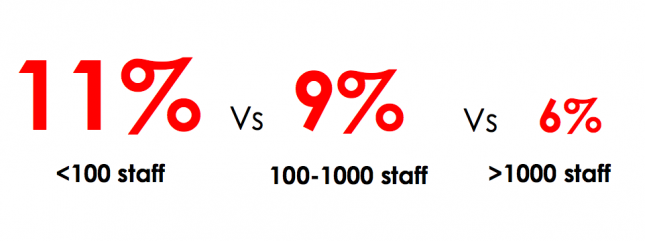
Percentage of revenue invested in marketing by company size
2010 CMO Council Survey
We shouldn't be surprised that as businesses establish themselves and grow, the number of staff grows. As they grow, the relative proportion of their revenue invested in marketing decreases. Marketers understand the long term nature of judging the return on investiment in marketing. Marketing that is consistant delivers compounding returns, a relatively large initial spend will pay dividends in the long term.
Average marketing budget for FMCG brands
A Go-to-Market survey in 2012 found this spread of investment by revenue of FMCG brands:
% of revenue % of companies
No budget 1.1%
0 - 2% 28.6%
3 - 5% 33%
6 - 10% 21.1%
11 - 15% 8.6%
16 - 20% 4.3%
20%+ 3.2%
You can use these percentages as a starting point for framing your marketing budget and then compare to the result of viewing your requirements from a bottom up view.

Bottom up marketing budget approach
Create a list of activities you plan to undertake across your integrated marcomms plan and estimate the required investments for each. Balance and adjust for frequency, reach and coverage. Consider set-up costs for all mediums and a realistic figure for content creation and creative, remembering the better the idea the less times your audience needs to see it to get a result. Factor in research and tracking and an allowance to have the flexibility to react and respond. Remember to allocate around half your total budget for labour, across both internal and outsourced agencies for development and management throughout the year.
Depending on the particular segment your brand is in, the consensus is a B2B marcomms budget needs to be between 3 and 6% of revenue and for FMCG between 6 and 12% to have at least a competitive share of voice.
Read MoreThe most and least trusted professions
Every year Roy Morgan releases a ranking of the trust Australians have for each of the professions. Advertising is down and real estate salesmen up in 2013.
Here are the jobs as they rank for trust in Australia
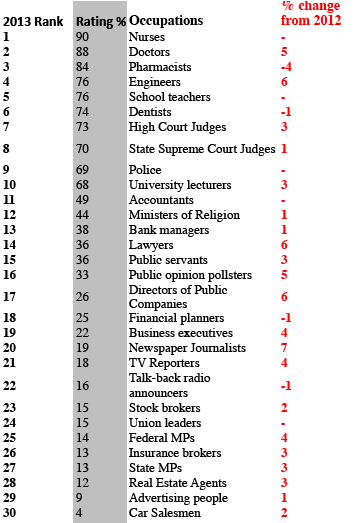
How does this compare on a global basis? See the global trust index.
Read MoreThe Naked truth on Rudd's interview for ads scandal

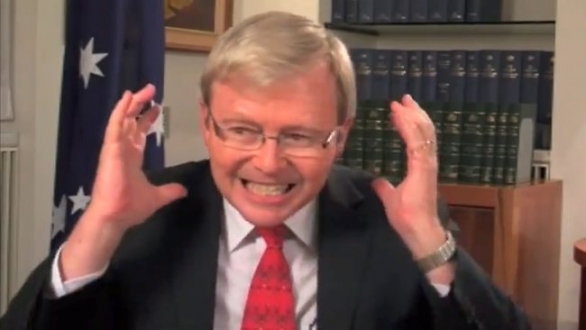
You probably already have an inkling the public rate marketers and ad people at the bottom of the trust scale for professions. You're right, they are down there with politicians. Something happened this week to reinforce the view that neither can be trusted, it's a classic example of an "whatever it takes who cares about the ethics" attitude.
Controversy blew up when Sydney based Naked Communications was exposed while working on a project for Labor when it offered video interviews with PM Kevin Rudd to online youth publishers in return for free online ad space.
Further blurring the lines between “an interview”, and an ad campaign, the agency wrote to Faifax owned The Vine they were “particularly keen for a deeper relationship (including putting investment behind your content on YouTube).”
They also encouraged the online publication to provide “access to pro-Labor or pro-NBN talent.”
When found with their pants down, Naked were fired by Labor. The Sydney Morning Herald’s political reporter, Jonathan Swan, who broke the story, said “it seemed very odd” that Labor was oblivious to the deals offered to online youth sites.
The agency’s CEO claimed no knowledge of the deal, blaming a younger staff member. Indeed, the day after it blew up the agency planner responsible was “no longer in the building”, having left for a holiday in the UK.
What has been adland's reponse to this question of maintaining standards?
Next day the Creative Director of Wonder wrote in AdNews “how much responsibility are we giving young and inexperienced executives? I think too much. Our industry is more impressed by 20-something backward baseball cap-wearing gamers that impress us with their social media savvy than wise old owls. Where are our wise old owls? Nobody could ever accuse the marketing industry as one that eats their young. Quite the opposite, we assassinate the old and we call anyone over 50 old. Mike Wilson (CEO) is Naked’s wise old owl and the bloke is only in his 40s.”
He then suggested the team at Naked vote Abbott to avoid a Labor backlash. This received some wise comments, my favourite from No Wonder of Paddington:
"Wisdom is not the province of age, and this is not an 'odd judgement error'. It's a failure from top down to create a culture of ethics... that at all times forces doing the right thing to trump making a splash for your client. Wilson may be the straight shooter he's characterised here to be, but as the leader of the pack, he's ultimately responsible for the culture that would spawn the actions of that 'rogue executive' who was shown the door"
"This isn't the first time that Naked has been guilty of pushing the envelope at the expense of common sense, and more importantly common decency. What's worse is that the creative drive to market at any expense has had a poisonous influence on the business in general, and in some corners legitimised the art of the stunt and the bad habit of erasing the moral line to such an extent that many of the young guns don't even know it exists."
"It's the agency that should take the fall in the end, not just the employee directly responsible, and encouraging them to vote for Abbott in an attempt to avoid the negative reaction from everyone that they richly deserve shows us all just how jaded the industry at large has become. Sad and sadder."
SMH's Swan labeled the agency “a bit wild west, they’ve got a cowboy reputation” and said they have a history of “doing things a bit off-piste”. Swan also mentioned the infamous fake Facebook Witchery coat campaign which duped both mainstream media and social media users in 2009.
When does online content become advertising?
According to the ACCC and AANA it’s one and the same in the eyes of the law, as we can see from the new Code on marketing communications that encompases social media.
Gabriel McDowell, MD of PR firm Res Publica pointed out the new risks inherent in attempting to leverage digital channels: “From a crisis management perspective, and based on the reported facts so far, I think the ALP has reacted promptly and appropriately to try to limit reputational damage to the Labor brand. They have made it clear they didn’t sanction the offending proposal and firing the responsible agency was a justifiable response given the seriousness of its misjudgement.
"And there can be no doubt that it is a whopper of a misjudgement because building trust and understanding between a brand and its public is the fundamental objective of any communication campaign and deliberately blurring the lines between editorial and advertising can only erode trust when it is uncovered.”
"It has never happened before. My mouth was on the ground. Young people are politically engaged and this is not the way to go about appealing to them. It is why we tend to shy away from the major parties."
She told AdNews it was "exactly the sort of thing that is killing media", but that brands generally grasped the value of editorial over paid content.
The challenge for the communications industry is while we may have self-regulation, only a handful of agencies are Accredited by the Communications Council. UNO is, Naked isn't and most clients don't appreciate the difference. As I commented to AdNews, "what's the point of having an agency Accreditation scheme when people arrive at work having forgotten to pack the moral compass. If we want to be regarded higher than real estate salesmen, which the latest research shows we don't, both clients and agencies need to keep briefs away from the irresponsible."
Will digital spell the end of editorial integrity?
This has all happened less than a week after Adnews editor-in-chief Paul McIntyre expressed a fear for the future of publishing as the title becomes a defacto re-publisher of PR releases and sponsored events. This is what he said in an open editorial:
"Change can be painful but equally stimulating. Just as long the industry knows where it’s all headed and in what direction it is pushing its industry media. It won’t be too far away, for example, when you all can hack back your budget for PR operatives. And PR types, brace for a much harder slog. Seriously, most of you won’t be needed. The deluge of PR-generated ideas and story angles is rising rapidly while the ability for business-to-business media to cover it is declining at the same pace. Don’t forget that. Okay, sorry, rant over."
Read More

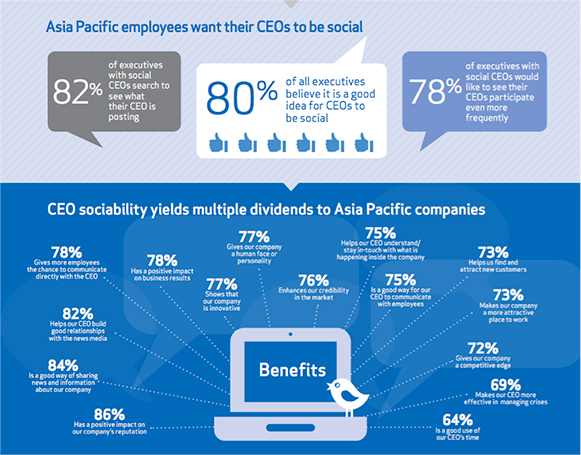
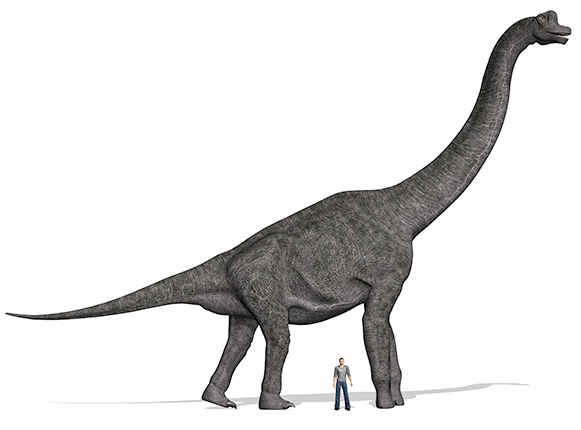
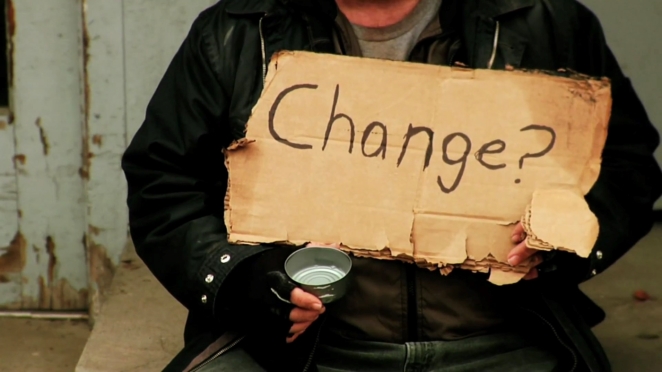
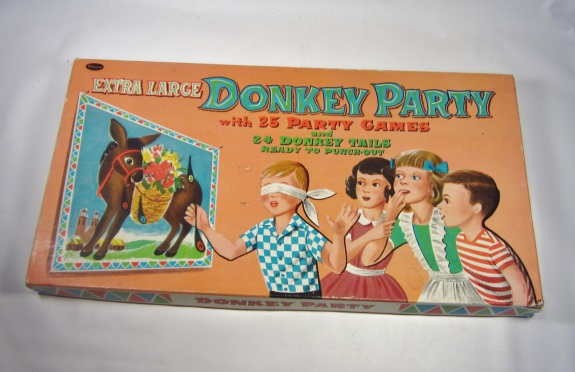



Scan the QR code for our contact details.
Download the Neoreader app.
© COPYRIGHT 2013 UNO marcomms Privacy